Comprehensive Guide to Garden Fence Installation in Hayes
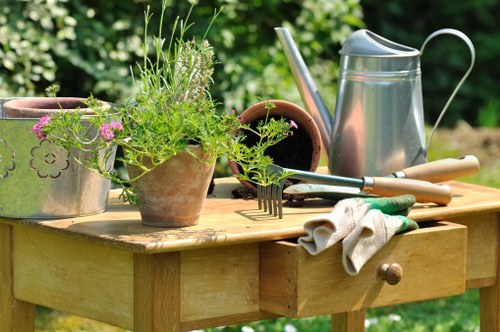
Installing a garden fence is a significant decision for homeowners in Hayes looking to enhance the beauty, security, and functionality of their outdoor spaces. Whether you're aiming to create a serene boundary for your garden, keep pets safe, or add an aesthetic appeal to your property, selecting the right fence and ensuring its proper installation is crucial.
Hayes offers a variety of garden styles, from traditional to modern, each requiring different fencing solutions. Understanding the local climate, soil conditions, and community regulations is essential to ensure your fence stands the test of time and complements your garden's design.
This guide provides a detailed overview of garden fence installation in Hayes, covering everything from selecting materials to the installation process, maintenance tips, and local considerations.
Choosing the Right Fence Material
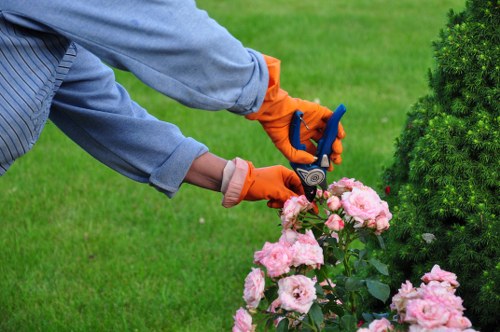
The first step in garden fence installation is selecting the appropriate material. The choice of material affects not only the fence's appearance but also its durability and maintenance requirements.
Wood: Wood fences are a popular choice due to their natural look and versatility. They can be painted or stained to match your garden's aesthetics. However, they require regular maintenance to prevent rot, warping, and insect damage.
Vinyl: Vinyl fences are known for their durability and low maintenance. They resist weathering, do not require painting, and are easy to clean. Vinyl comes in various styles and colors, making it a versatile option for different garden designs.
Metal Fences
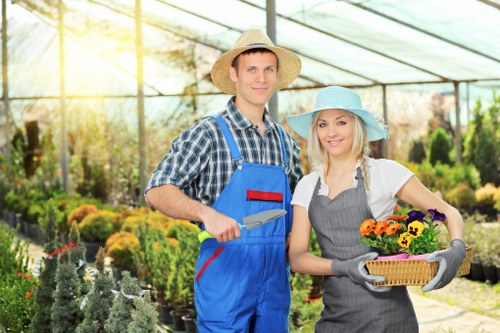
Metal fences, such as aluminum or wrought iron, offer a sleek and modern look. They are highly durable and require minimal maintenance. Metal fences are ideal for creating defined boundaries and adding a touch of elegance to your garden.
Pros:
- Long-lasting and durable
- Low maintenance
- Provide excellent security
Cons:
- Can be more expensive upfront
- Limited privacy unless combined with other materials
Planning Your Fence Installation
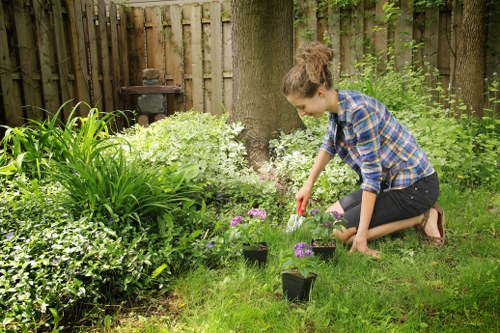
Proper planning is essential for a successful garden fence installation. Begin by measuring the area where the fence will be installed to determine the amount of material needed and the overall cost.
Check local Hayes regulations and homeowners' association (HOA) guidelines to ensure compliance with height restrictions, setback requirements, and other rules. Obtaining the necessary permits before starting the installation can save you from potential legal issues.
Consider the purpose of your fence. Are you looking for privacy, security, or aesthetic enhancement? Your goals will influence the type of fence you choose and its placement within your garden.
Marking the Fence Line
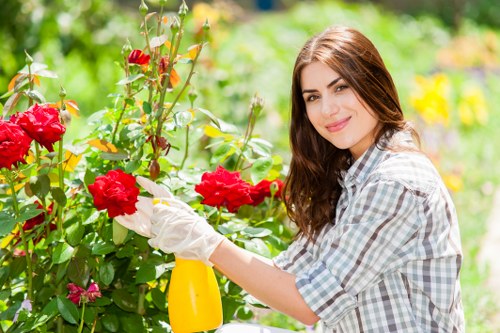
Accurate marking of the fence line is crucial. Use stakes and string to outline where the fence will be installed. Ensure the line is straight and adjusted according to your planned layout.
Identify any obstacles such as trees, sidewalks, or utility lines. These may require adjustments to your fence design or placement.
Double-check measurements to prevent errors that could lead to wasted materials or the need for costly adjustments during installation.
Installation Process
Preparing the Ground
Preparing the ground is a fundamental step in fence installation. Clear the area of any debris, rocks, or vegetation to create a smooth surface for your fence.
For wooden and metal fences, you may need to dig post holes. The depth and width of the holes depend on the fence height and the local frost line. Typically, holes should be at least one-third of the fence's total height.
Add gravel to the bottom of each hole to ensure proper drainage and prevent water accumulation around the posts.
Setting the Posts
Installing sturdy posts is vital for the fence's stability. Place the posts in the prepared holes, ensuring they are level and aligned with the marked fence line.
Use a level to check the vertical alignment of each post. Secure the posts with concrete for maximum stability, allowing sufficient time for the concrete to set before attaching the fence panels.
Spacing between the posts should correspond to the fence material guidelines, typically 6 to 8 feet apart for most garden fences.
Attaching the Fence Panels
Once the posts are set and secure, begin attaching the fence panels. For wooden fences, nails or screws can be used, while metal fences may require specific fasteners or brackets.
Ensure each panel is level and securely fastened to maintain the fence's integrity. Regularly check for gaps or misalignments during the installation process.
Finishing touches, such as caps for wooden posts or painting vinyl fences, can enhance the overall appearance and longevity of your garden fence.
Maintenance Tips for Your Garden Fence
Proper maintenance extends the lifespan of your garden fence and keeps it looking its best. Here are some essential maintenance tips:
- Regular Cleaning: Remove dirt, debris, and any stains using appropriate cleaning solutions based on the fence material.
- Inspect for Damage: Regularly check for signs of wear, such as loose panels, rust on metal fences, or rot in wooden fences. Address issues promptly to prevent further damage.
- Repainting or Staining: For wooden fences, repainting or staining every few years protects against weather damage and keeps the wood looking fresh.
- Lubricate Moving Parts: If your fence includes gates or hinges, ensure they are lubricated to prevent sticking or rusting.
Local Considerations in Hayes
When installing a garden fence in Hayes, it's essential to consider the local environment and community standards. Hayes encompasses various areas, each with unique features that may influence your fence installation:
- South Hayes: Known for its lush gardens and family-friendly neighborhoods, South Hayes residents often prefer wooden or vinyl fences that blend with the natural surroundings.
- North Hayes: This area features more modern architecture, making metal or composite fences a popular choice for adding a contemporary touch.
- East Hayes: With its mix of residential and commercial properties, East Hayes requires versatile fencing solutions that offer both privacy and security.
- West Hayes: The scenic landscapes in West Hayes call for decorative fences, such as wrought iron or ornamental vinyl, to enhance curb appeal.
- Central Hayes: Central Hayes combines urban living with green spaces, necessitating durable yet aesthetically pleasing fencing options.
- Hayes Park: In Hayes Park, environmentally friendly fencing materials like recycled metal or sustainably sourced wood are highly favored.
- Hayes Heights: Elevated areas in Hayes Heights may require additional support and sturdier materials to withstand wind and weather conditions.
- Hayes Meadows: The meadows in this area benefit from natural fencing materials that complement the open landscapes.
- Hayes Lake: Close to Hayes Lake, fences often incorporate waterproof and rust-resistant materials to cope with the humid climate.
- Hayes Ridge: The ridge's unique topography may influence fence design, requiring custom solutions to fit the terrain.
- Hayes Gardens: Enthusiasts in Hayes Gardens prefer ornate fences that highlight the beauty of their meticulously maintained plants and flowers.
- Hayes Valley: The valley's diverse architecture allows for a wide range of fencing styles, providing residents with flexibility in their choices.
- Hayes Hills: Hilly regions like Hayes Hills benefit from fencing that provides both containment and harmony with the natural slope.
- Hayes Shores: Near the shores, fencing materials must resist moisture and provide a barrier against sand and salt exposure.
- Hayes Grove: In grove areas, integrating the fence with existing trees and vegetation enhances the overall aesthetic.
Cost Considerations
The cost of garden fence installation in Hayes varies based on several factors, including the type of material, fence height, length, and labor expenses. On average, homeowners can expect to pay between $1,500 and $5,000 for a typical garden fence installation.
Choosing high-quality materials may result in higher initial costs but can save money in the long run by reducing maintenance and replacement needs. Obtaining multiple quotes from local contractors ensures you receive competitive pricing and quality service.
Hiring a Professional vs. DIY Installation
Deciding between hiring a professional or undertaking a DIY fence installation depends on your skill level, time availability, and the complexity of the project.
- Professional Installation: Professionals bring expertise, ensure compliance with local regulations, and can complete the project efficiently. While more expensive, it reduces the risk of errors and ensures a high-quality finish.
- DIY Installation: For those with experience and the necessary tools, DIY can be a cost-effective option. However, it requires careful planning, effort, and may take longer to complete.
Weigh the pros and cons based on your specific situation to make an informed decision.
Environmental Impact
Consider the environmental impact of your fence materials and installation practices. Sustainable materials like recycled metal or sustainably sourced wood minimize environmental footprint. Additionally, proper installation ensures longevity, reducing the need for frequent replacements.
Enhancing Your Garden with Fencing
A well-installed fence can transform your garden into a private sanctuary, increase property value, and provide a safe environment for children and pets. Integrate elements like climbing plants, decorative panels, or lighting to add character and functionality to your garden fence.
Conclusion
Garden fence installation in Hayes is a worthwhile investment that enhances both the aesthetics and security of your property. By carefully selecting the right materials, planning meticulously, and considering local factors, you can achieve a fence that meets your needs and complements your garden's beauty.
FAQs
- 1. How long does it take to install a garden fence in Hayes?
The installation time depends on the fence type and project size. On average, a professional installation can take anywhere from a few days to a couple of weeks.
- 2. What permits are required for fence installation in Hayes?
Permit requirements vary based on fence height and location. It's essential to check with the Hayes local council or HOA for specific regulations before starting your project.
- 3. Can I install a garden fence myself?
Yes, if you have the necessary skills and tools. However, for complex projects or larger fences, hiring a professional is recommended to ensure quality and compliance with local regulations.
- 4. What maintenance does a wooden fence require?
Wooden fences need regular maintenance, including staining or painting, inspecting for rot or damage, and cleaning to prevent mold and mildew growth.
- 5. Are there eco-friendly fencing options available?
Yes, options like recycled metal, sustainably sourced wood, and composite materials offer environmentally friendly alternatives for garden fencing.